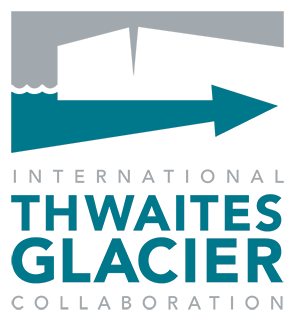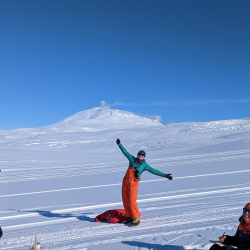At PASSCAL, Madeline helps support various seismic experiments in the Arctic and Antarctic. Madeline deployed with the TIME team as technical support for the hundreds of seismic nodes, small 3-channel seismometers, that were used in the 2022-23 season.
Hoffman ITGC:090
Hoffman, A. O., K. Christianson, N. Holschuh, E. Case, J. Kingslake, and R. Arthern. 2022. The Impact of Basal Roughness on Inland Thwaites Glacier Sliding. Geophysical Research Letters 49:14 e2021GL096564.
Davis ITGC:081
Davis, P.E.D., K.W. Nicholls, D.M. Holland, et al. 2023. Suppressed basal melting in the eastern Thwaites Glacier grounding zone. Nature 614, 479–485 (2023).
Maclennan ITGC:080
Maclennan, M. L., J. T. M. Lenaerts, C. Shields, and J. D. Wille. 2022. Contribution of Atmospheric Rivers to Antarctic Precipitation. Geophysical Research Letters 49:18 e2022GL100585.
Graham ITGC:078
Graham, A.G.C., A., Wåhlin, K. A. Hogan, et al. 2022. Rapid retreat of Thwaites Glacier in the pre-satellite era. Nature Geoscience 15, 706–713.
Wild ITGC:075
Wild, C. T., T. S. Dotto, K. E. Alley, et al. A Tale of Two Ice Shelves: Contrasting Behavior During the Regional Destabilization of the Dotson-Crosson Ice Shelf System, West Antarctica. ESS Open Archive June 08, 2022.
Barnes ITGC:074
Barnes, J. M., and G. H. Gudmundsson. 2022. The predictive power of ice sheet models and the regional sensitivity of ice loss to basal sliding parameterisations: a case study of Pine Island and Thwaites glaciers, West Antarctica. The Cryosphere 16, 4291–4304, 2022.
Adams ITGC:071
Adams, J. R., J. S. Johnson, S. J. Roberts, P. J. Mason, K. A. Nichols, R. A. Venturelli, K. Wilcken, G. Balco, B. Goehring, B. Hall, J. Woodward, and D. H. Rood. 2022. New 10Be exposure ages improve Holocene ice sheet thinning history near the grounding line of Pope Glacier, Antarctica. The Cryosphere, 16, 4887–4905, 2022
Chaput ITGC:067
Chaput, J., R. Aster, M. Karplus, and N. Nakata. 2022. Ambient high-frequency seismic surface waves in the firn column of central west Antarctica. Journal of Glaciology, 68(270), 785-798.







